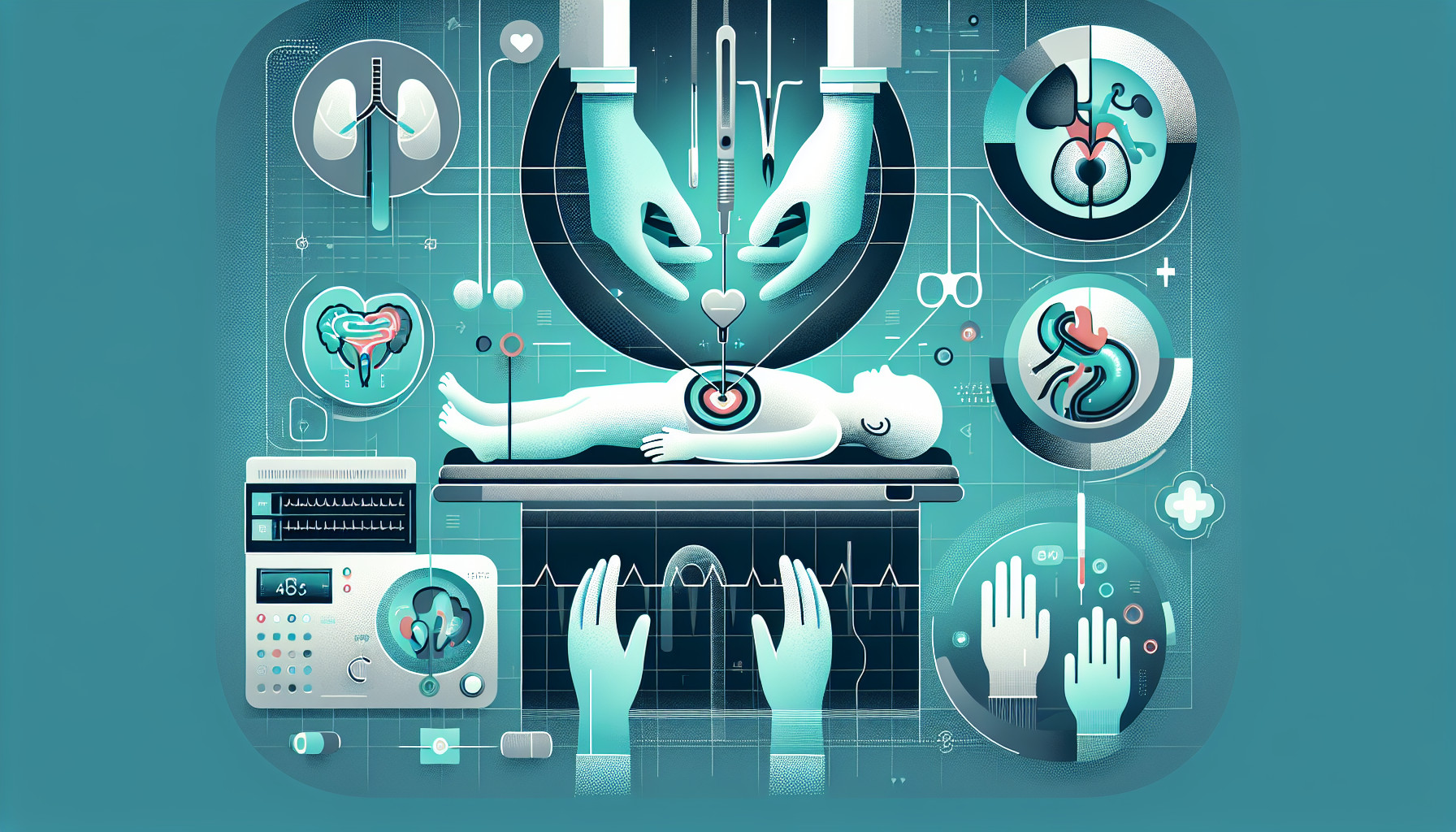Our Summary
This research paper reviews the results of a surgical procedure used to treat a condition called Morgagni hernia (MH) in children. The procedure, known as laparoscopy-assisted transabdominal repair, was performed on 22 patients, most of whom were boys. The operation uses a special kind of stitching technique and is minimally invasive, meaning it doesn’t require a large incision.
The study found that the operation usually took around 45 minutes and the children generally stayed in the hospital for about 2 days afterwards. In almost all cases, the procedure went smoothly and there were no instances of the hernia recurring afterwards. However, in two cases the surgery had to be switched to a more traditional open surgery due to complications.
The researchers concluded that this type of laparoscopic surgery is a safe and effective way to treat Morgagni hernia in children. They also found that there was no need to remove the hernia sac during the operation, which makes the procedure simpler and doesn’t increase the chances of the hernia recurring.
FAQs
- What is the laparoscopy-assisted transabdominal repair procedure used for?
- How long do children typically stay in the hospital after undergoing this procedure for Morgagni hernia?
- Did the study find any instances of the hernia recurring after the laparoscopic surgery?
Doctor’s Tip
One helpful tip a doctor might give to a patient about pediatric hernia repair is to make sure their child follows all post-operative care instructions. This may include keeping the incision site clean and dry, avoiding strenuous activities for a certain period of time, and taking any prescribed medications as directed. Following these instructions can help ensure a smooth recovery and reduce the risk of complications.
Suitable For
Pediatric hernia repair is typically recommended for children who have been diagnosed with a hernia, a condition where an organ or tissue pushes through a weak spot in the abdominal wall. In the case of Morgagni hernia, it specifically affects a small opening in the diaphragm, allowing organs to move into the chest cavity.
Children with hernias may experience symptoms such as a bulge in the abdomen or groin area, pain or discomfort, and vomiting. In some cases, the hernia can become incarcerated, meaning it becomes trapped and unable to be pushed back into place, which can lead to serious complications.
Surgery is usually recommended for pediatric hernia repair to prevent complications such as bowel obstruction, strangulation, or tissue damage. Laparoscopic techniques, like the one discussed in the research paper, are often favored for pediatric hernia repair as they are minimally invasive, have shorter recovery times, and have lower rates of complications compared to traditional open surgeries.
Overall, pediatric patients who are diagnosed with a hernia and are experiencing symptoms or are at risk of complications are typically recommended for hernia repair surgery. The specific type of surgery and technique used will depend on the individual patient’s condition and the preferences of the surgical team.
Timeline
Before pediatric hernia repair:
- The patient may experience symptoms such as a visible bulge or swelling in the groin area
- The patient may feel pain or discomfort in the affected area, especially when straining or lifting heavy objects
- The patient may undergo imaging tests such as an ultrasound to confirm the presence of a hernia
- The patient may be advised to avoid strenuous activities or heavy lifting to prevent worsening of the hernia
After pediatric hernia repair:
- The patient will undergo the laparoscopy-assisted transabdominal repair procedure, which typically takes around 45 minutes
- The patient will stay in the hospital for about 2 days for observation and recovery
- The patient may experience some pain or discomfort at the surgical site, which can be managed with medication
- The patient will be advised to avoid strenuous activities for a few weeks to allow for proper healing
- Follow-up appointments will be scheduled to monitor the patient’s recovery and ensure that the hernia does not recur.
What to Ask Your Doctor
- What is a Morgagni hernia and how does it affect my child?
- Why is laparoscopy-assisted transabdominal repair recommended for my child’s hernia?
- What are the potential risks and complications associated with this surgery?
- How long will the surgery take and how long will my child need to stay in the hospital?
- What is the recovery process like for children undergoing this type of hernia repair?
- Are there any long-term effects or considerations we should be aware of after the surgery?
- Will my child need any follow-up appointments or ongoing care after the surgery?
- Are there any specific dietary or activity restrictions my child should follow during the recovery period?
- How likely is it that the hernia will recur after this type of surgery?
- Are there any alternative treatment options we should consider before proceeding with this surgery?
Reference
Authors: Karadag CA, Erginel B, Yildiz A, Kaba M, Demir M, Sever N. Journal: J Pediatr Surg. 2023 Sep;58(9):1670-1673. doi: 10.1016/j.jpedsurg.2023.01.045. Epub 2023 Jan 26. PMID: 36804105
